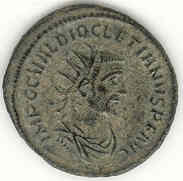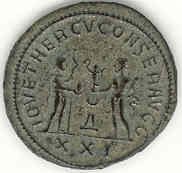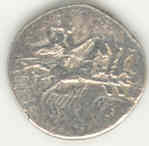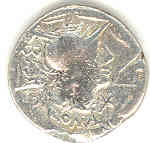This antoninianus of the Emperor Diocletian is 22 mm. in diameter and weighs 4.6 grams.

Diocletian decided that the Roman empire was too big for one man and divided it into east and west. He ruled the east while Maximian ruled the west beginning in 286 CE. They ruled as co-emperors. In 293 CE he brought on two more men to help rule the empire as Caesars. He and his co-emperor took on the names Jovis and Herculius respectively after 287 CE. Around 295 CE of Diocletian's reign he reformed the coin system by eliminating the silver in
antoniniani. Coins of this type are known as post-reform radiates. This coin however, is before the reform. We know this because of the XXI on the reverse, which most likely denotes the silver content in the coin.

The obverse of the coin shows a bust of Emperor Diocletian, draped and cuirassed, wearing a radiate crown. The obverse inscription reads " IMP C C VAL DIOCLETIANVS P F AVG".
The reverse is inscribed "IOV ET HERCV CONSER AVGG"(To Jovis and Hercules the preservers of the Emperors). It shows Jupiter( Jovis), on the left, with a scepter in one hand and a globe in the other and Hercules on the right with the personification of victory on a globe. Below Victory is a crescent and a delta. This coin resembles RIC275v. The coin is from between 287-295 because it was made after after Diocletian and Maximianus took on the personas of Gods and before the coinage reform.
The symbolism on the back shows the unequal relationship between the co-emperors. Jovis, representing Diocletian, is the King of the gods and father of Hercules, representing Maximianus. His scepter and globe are traditional symbols of power.
Unresolved questions about this coin include: Does the Victory on the globe represent a particular victory ? Is Hercules handing the Victory on a globe to Jovis or just showing it off? Where was the coin minted?




